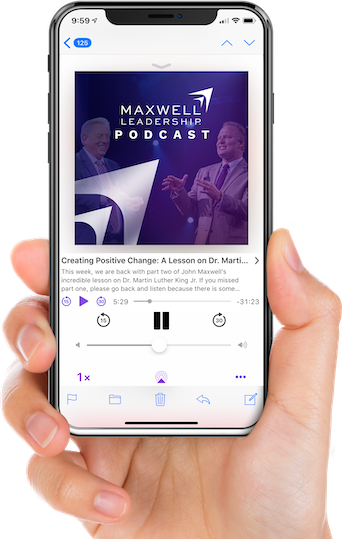There are Five Generations in Today’s Workforce. Are you Ready to Lead Them All?

For the first time in our nation’s history, we have five generations collaborating together in the same workforce. This convergence presents stunning opportunities for innovation with so many different perspectives together under one roof. But it also reveals significant challenges in communication, engagement and, most importantly, leadership. One of the core principles of our beliefs is that we need to lead people the way they need to be led.
To truly connect with the people on your team, you need to meet them where they are before you can take them somewhere new. That means you need to understand the unique motives and values of each generation. If you’re not intentional about learning and understanding these differences, you’re going to lose influence with your team. Disengagement is a direct response to a leader’s disinterest—and that’s something no leader can afford when leading across generations.
To help you find common ground, here is a quick overview of the five generations, what makes them tick, and how you can meet each generation in a place they understand and appreciate.
The Greatest Generation
Sometimes known as the Silent Generation, the people belonging to this group were born between 1928 and 1945. They value hard work, conformity and working together for the common good. Members of the Greatest Generation are more formal with their communication, using direct methods such as a letter, email, or a face-to-face conversation. This generation prizes clear goals and clear objectives for meeting those goals. They have a wealth of experience and mentorship that they are willing to share with the younger generations—lead by inviting them to mentor and share that wisdom.
The Baby Boomers
Baby Boomers (or just Boomers) were born between 1946 and 1964. As a group, they tend to be optimistic, with a clearly defined sense of right and wrong. They prefer personalized communication and more autonomy in how they work. They share a desire with the previous generation to measure results, but want the freedom to take their own path in getting there. In short, lead by getting out of their way while monitoring and verifying their progress.
Generation X
This generation came of age with the personal computer, e-mail, the Internet, the fall of communism, the rise of extremism, and the explosion of single-parent households. These changes began a values realignment in our working culture as this group focused on non-traditional priorities. Gen Xers desired something more for their lives and from their work, like making achievements in human rights part their goals structure. This group is highly entrepreneurial, having formed a core component of the dot-com boom. As a result, Generation X does not value loyalty to a single company the way previous generations did. To connect with this audience, communicate directly, but give room for their input. This generation wants to know clearly what’s going on and how they fit into the bigger picture.
Millennials
Generation Y, or Millennials, were born between 1981 and 1997. There are some similarities with the previous two generations in that this generation believes in success, desires clear measurement of progress or failure, and prefers direct, meaningful feedback. But they prefer to communicate through more instant media, like text or social media. Leaders that adopt those tools might realize more connection with these millennial team members than they would have thought possible. With a distinct, multicultural mindset, Millennials are even more interested than Gen Xers in making a difference and adding value globally. They need to know that what they’re doing matters and value work/life balance more than previous generations. One interesting component to this generation: they are adept at mentoring outside of their age group and can provide input and feedback to generations on either side of their own.
Generation Z
Born after 1997, this generation is comprised of full-fledged digital and mobile technology natives. It’s a group shaped by recent history, including the Debt Crisis and Great Recession, which means they are more experienced with issues such as savings and debt than previous generations. With their technical savvy, job hunting is no problem and it’s expected that this generation will have 12-15 jobs in their lifetime. Making an impact and producing meaningful work is more important to this group than a long-term career. Like Millennials, a useful engagement strategy is showing Generation Z workers how they fit into the bigger picture and how their work makes a difference for good, whether it is for the environment, helping those in need or simply helping others on their own team.
With Generation 2020 on the horizon, an effective leader needs an intentional, deliberate plan for connecting with each generation represented on his or her team. This is where the 5 Levels of Leadership can help leaders formulate an effective plan. Leaders should pay close attention to Level 3 and producing results, because each generation defines results differently and you need to consider this when leading at their level. Fortunately the 5 Levels of Leadership builds a common language that each generation can understand and embrace, which builds the necessary bridges for team members of all ages to work together and achieve their peak potential.
More Articles

10 Practical Ways to Improve Your Listening as a Leader

Communicating with Clarity – A Leadership Development Game Changer









Be the first to comment on "There are Five Generations in Today’s Workforce. Are you Ready to Lead Them All?"